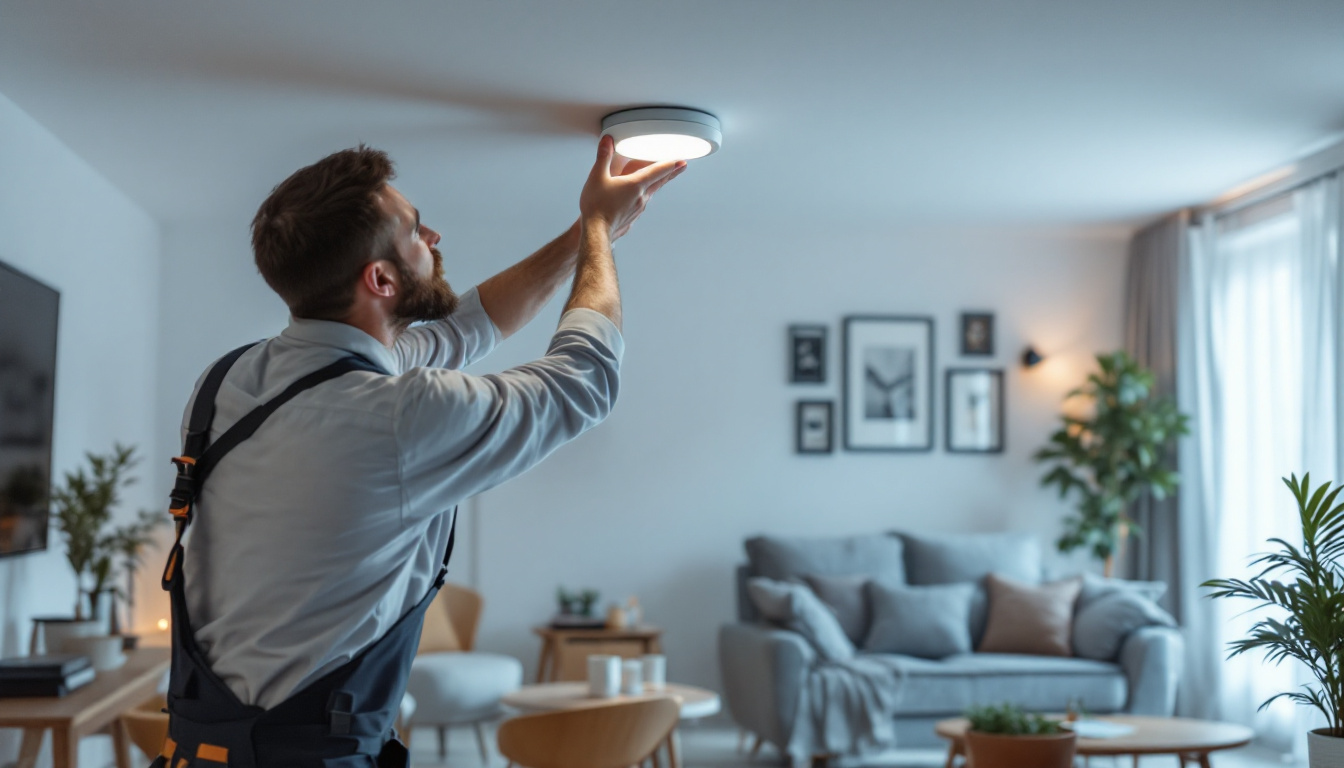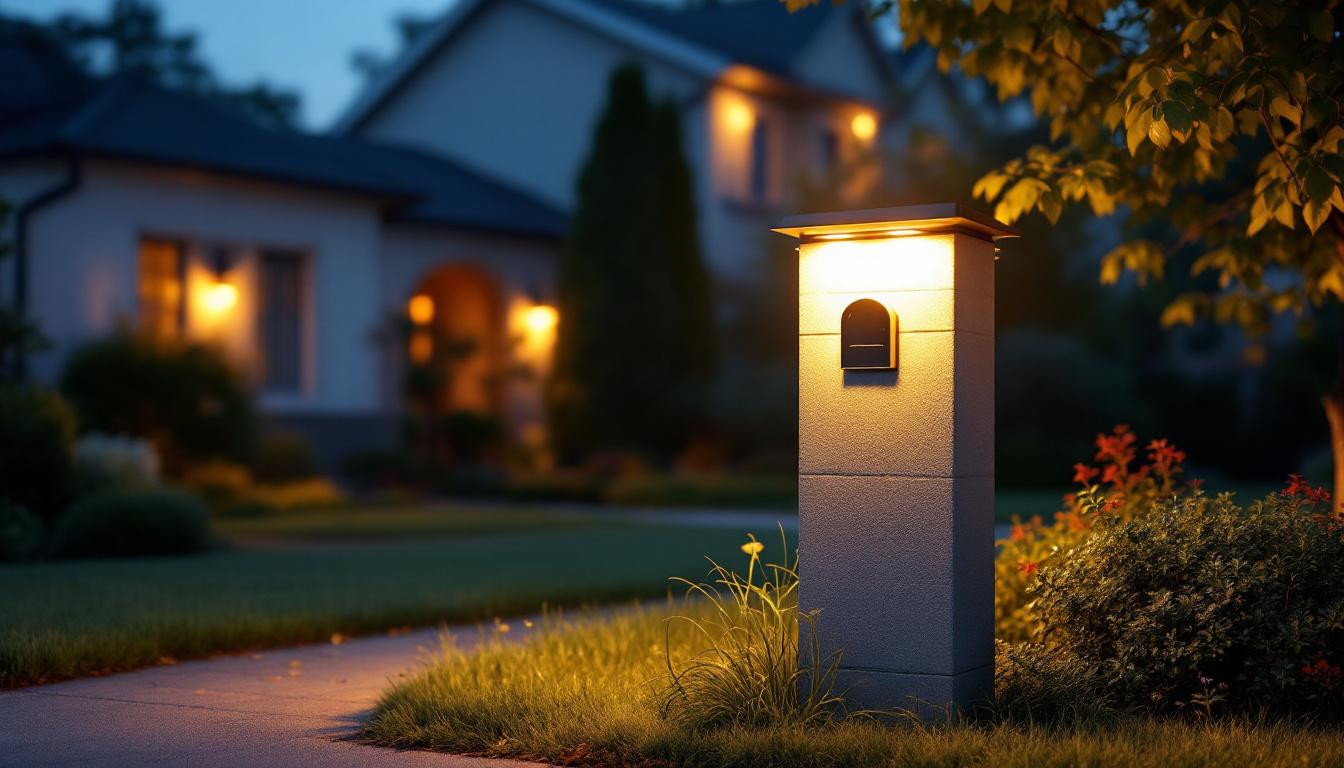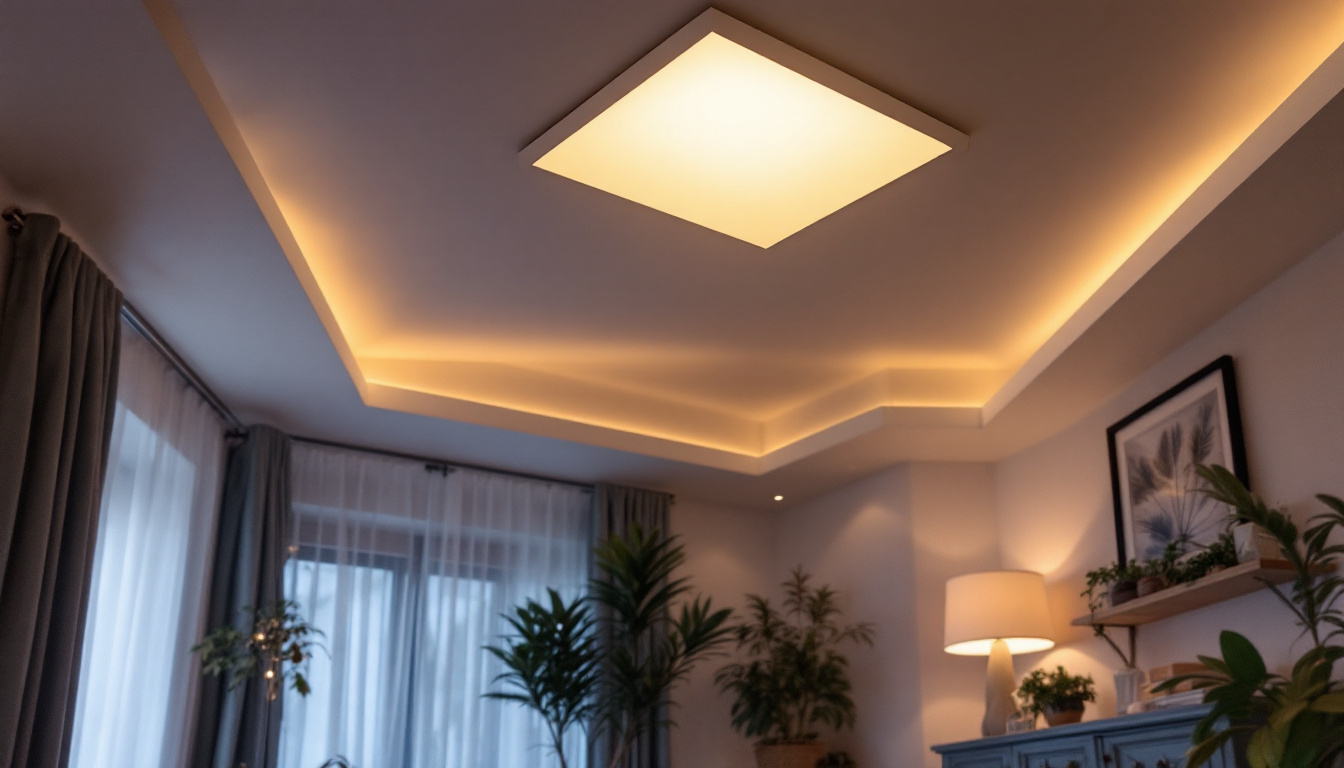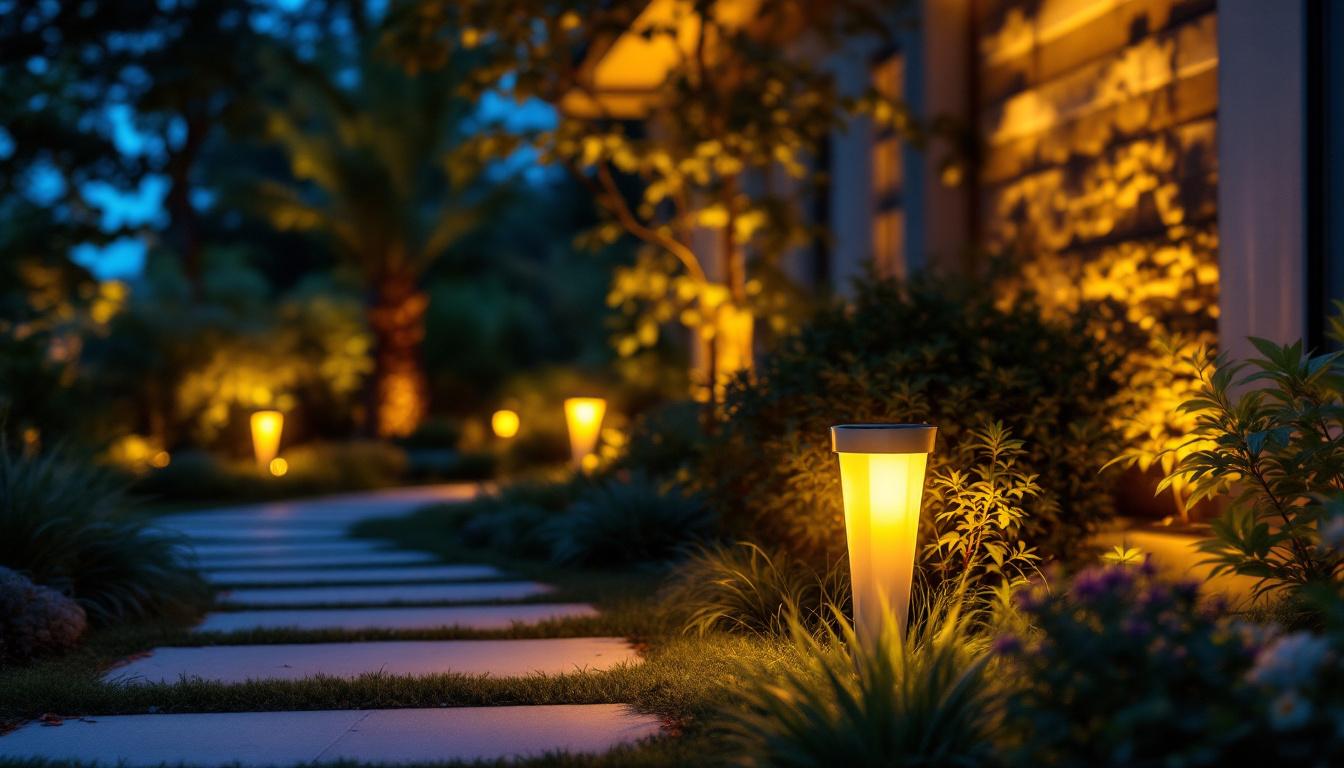
As the demand for energy-efficient lighting solutions continues to rise, many lighting contractors are finding themselves at the forefront of a significant transition: the shift from traditional recessed lighting to modern LED alternatives. This guide aims to provide essential insights into replacement LED recessed lights, helping contractors navigate the complexities of this evolving market.
LED (Light Emitting Diode) technology has revolutionized the lighting industry. Unlike traditional incandescent or fluorescent bulbs, LEDs convert a higher percentage of energy into light rather than heat, making them far more efficient. This efficiency translates into lower energy bills for homeowners and businesses alike, which is a compelling selling point for contractors. Additionally, the compact size of LEDs allows for innovative design possibilities, enabling architects and designers to create sleek, modern lighting solutions that were previously unattainable with bulkier lighting options.
One of the primary advantages of LED recessed lights is their longevity. LED bulbs can last up to 25,000 hours or more, significantly reducing the frequency of replacements. This longevity not only saves money on replacement costs but also minimizes the inconvenience of changing bulbs in hard-to-reach areas. Furthermore, the durability of LEDs means they are less prone to breakage, making them an ideal choice for high-traffic areas or environments where traditional bulbs might be subjected to vibrations or impacts.
Additionally, LEDs are available in a variety of color temperatures, allowing contractors to offer tailored lighting solutions that meet the specific aesthetic and functional needs of their clients. From warm white to cool daylight, the versatility of LED lighting can enhance the ambiance of any space. Beyond color temperature, many LED products now come with adjustable brightness levels and smart technology features, enabling users to customize their lighting experience even further. This adaptability makes LEDs perfect for various applications, from cozy residential settings to dynamic commercial spaces.
Energy efficiency is a key factor driving the adoption of LED technology. By using significantly less electricity than traditional lighting options, LEDs contribute to reduced carbon footprints. This aspect is increasingly important as both consumers and businesses become more environmentally conscious. The shift towards LED lighting not only helps in cutting down on energy consumption but also plays a crucial role in reducing the demand for fossil fuels, further supporting global sustainability efforts.
Moreover, many municipalities offer incentives for energy-efficient upgrades, which can be an excellent selling point for contractors. Understanding the local regulations and available rebates can enhance the value proposition when discussing LED replacements with clients. Additionally, the reduced heat output of LEDs means less strain on air conditioning systems, leading to further energy savings during warmer months. As the market continues to evolve, advancements in LED technology promise even greater efficiencies and innovative solutions, making it an exciting time for both consumers and industry professionals alike.
When selecting replacement LED recessed lights, contractors must consider several factors to ensure optimal performance and satisfaction for their clients. The right choice can significantly impact both the functionality and aesthetics of the space.
Before proceeding with replacements, it is essential to assess the compatibility of LED bulbs with existing recessed fixtures. Some fixtures may require specific types of LED bulbs, such as retrofits designed to fit standard housings. Understanding the specifications of existing fixtures can prevent costly mistakes and ensure a smooth installation process.
Additionally, contractors should be aware of the dimming capabilities of the chosen LED products. Not all LED lights are compatible with dimmer switches, and using incompatible bulbs can lead to flickering or reduced lifespan. It is advisable to recommend products that are explicitly labeled as dimmable when clients wish to maintain this feature.
Moreover, it is beneficial to consider the beam angle of the LED lights. A narrow beam angle is ideal for highlighting specific areas or features, while a wider beam angle can provide more general illumination. This aspect is particularly important in spaces where artwork or architectural details are present, as it allows for a more dynamic and visually appealing lighting design.
The color temperature of LED lights is measured in Kelvins (K) and can dramatically affect the mood of a space. For instance, warmer tones (around 2700K) create a cozy atmosphere, ideal for living rooms and bedrooms, while cooler tones (5000K and above) are often preferred for workspaces and kitchens. Contractors should guide their clients in selecting the appropriate color temperature based on the intended use of each area.
Brightness is another critical consideration, typically measured in lumens. When replacing existing fixtures, it is crucial to match or exceed the lumen output of the previous bulbs to ensure adequate lighting. Providing clients with a clear understanding of their lighting needs can help facilitate informed decisions. Additionally, it may be worthwhile to discuss the concept of color rendering index (CRI), which measures how accurately a light source displays colors compared to natural light. A higher CRI (above 90) is particularly desirable in settings like art studios or retail spaces, where color accuracy is paramount.
Furthermore, the energy efficiency of LED lights should not be overlooked. LED technology is known for its low energy consumption compared to traditional incandescent or fluorescent bulbs. Educating clients about the long-term savings on energy bills and the reduced frequency of replacements can enhance their overall satisfaction with the investment. Highlighting the environmental benefits of using LED lights, such as lower carbon footprints and reduced waste, can also resonate well with eco-conscious clients looking to make sustainable choices in their home or business lighting solutions.
Installing replacement LED recessed lights requires a thorough understanding of both the electrical and structural aspects of the project. Adhering to best practices ensures safety, efficiency, and optimal performance.
Before beginning any installation, safety should be the top priority. This includes ensuring that the power is turned off at the circuit breaker to prevent electrical shocks. Contractors should also wear appropriate personal protective equipment (PPE) and follow local electrical codes and regulations.
In cases where new wiring is required, it is essential to use high-quality materials and follow best practices for installation. This not only ensures compliance with safety standards but also enhances the longevity and reliability of the lighting system.
The placement and spacing of recessed lights can significantly impact the overall lighting quality. A common rule of thumb is to space recessed lights approximately 4 to 6 feet apart, depending on the height of the ceiling and the desired brightness. In areas with higher ceilings, wider spacing may be necessary to achieve even illumination.
Contractors should also consider the purpose of the lighting when determining placement. For instance, task lighting in kitchens may require more focused lighting, while ambient lighting in living areas can be more dispersed. Taking the time to plan the layout carefully can lead to a more satisfying end result for clients.
Despite the numerous benefits of LED recessed lights, some common concerns may arise during the transition from traditional lighting. Addressing these concerns proactively can help build trust and confidence with clients.
One concern often raised about LED lights is their heat dissipation. While LEDs produce significantly less heat than incandescent bulbs, they still generate some heat that must be managed effectively. Proper ventilation in recessed fixtures is crucial to prevent overheating and ensure optimal performance.
Contractors should educate clients on the importance of selecting fixtures designed for LED use, which typically include heat sinks to dissipate heat efficiently. This knowledge can alleviate concerns and reinforce the advantages of LED technology.
Another common concern is the initial cost of LED fixtures, which can be higher than traditional lighting options. However, it is essential to emphasize the long-term savings associated with LED lighting, including reduced energy bills and lower maintenance costs due to their extended lifespan.
Providing clients with a clear cost-benefit analysis can help them understand the value of investing in LED technology. Highlighting potential rebates and incentives can further enhance the financial appeal of making the switch.
The LED lighting market is continually evolving, with new technologies and trends emerging regularly. Staying informed about these developments can help contractors remain competitive and offer the best solutions to their clients.
One of the most significant trends in lighting is the integration of smart technology. Smart LED recessed lights can be controlled remotely via smartphones or voice-activated devices, allowing users to adjust brightness, color temperature, and even set schedules for their lighting needs.
As smart home technology becomes increasingly prevalent, contractors should consider offering smart LED options to clients. This not only enhances convenience but also appeals to tech-savvy consumers looking for modern solutions.
As energy efficiency standards continue to tighten, manufacturers are constantly innovating to create even more efficient LED products. This includes advancements in chip technology, optics, and thermal management, all contributing to improved performance and lower energy consumption.
Contractors should stay abreast of these advancements to ensure they are providing the most efficient and up-to-date products available. This knowledge can also position them as experts in the field, enhancing their reputation and client trust.
The transition to replacement LED recessed lights presents a wealth of opportunities for lighting contractors. By understanding the benefits of LED technology, carefully selecting the right products, adhering to best installation practices, and addressing common concerns, contractors can successfully navigate this evolving landscape.
Moreover, staying informed about future trends and advancements will not only enhance the services offered but also position contractors as leaders in the lighting industry. As the demand for energy-efficient solutions continues to grow, embracing LED technology will undoubtedly lead to a brighter future for both contractors and their clients.
Ready to elevate your lighting game with the latest LED technology? Look no further than LumenWholesale for all your lighting needs. We provide contractors with the highest quality, spec-grade LED recessed lights at unbeatable wholesale prices. By choosing us, you’re opting for superior products without the extra costs, ensuring your projects shine with reliability and high performance. Plus, with free shipping on bulk orders, you can stock up on premium lighting without worrying about hidden fees. Don’t compromise on quality or value; visit LumenWholesale today and discover the perfect blend of quality, affordability, and convenience for your next project.

Discover how a lighted mailbox post can transform your lighting installation business by enhancing curb appeal and boosting profitability.

Discover expert insights on recessed light square installations with our comprehensive guide.

Explore the latest advancements in contemporary outdoor solar lights and discover essential insights for lighting contractors.

Discover expert strategies and proven techniques for lighting contractors to effectively utilize fluorescent bulbs.